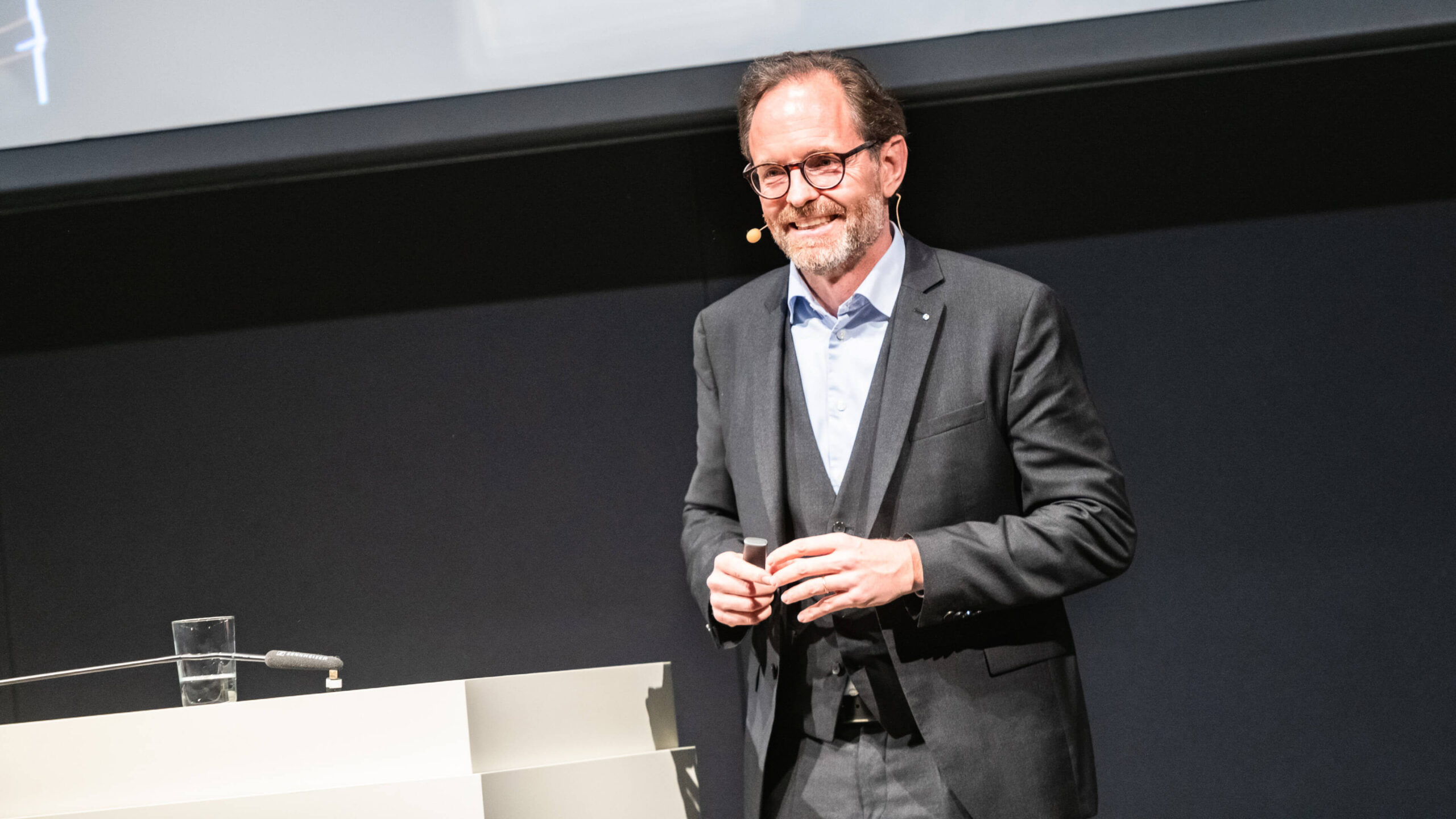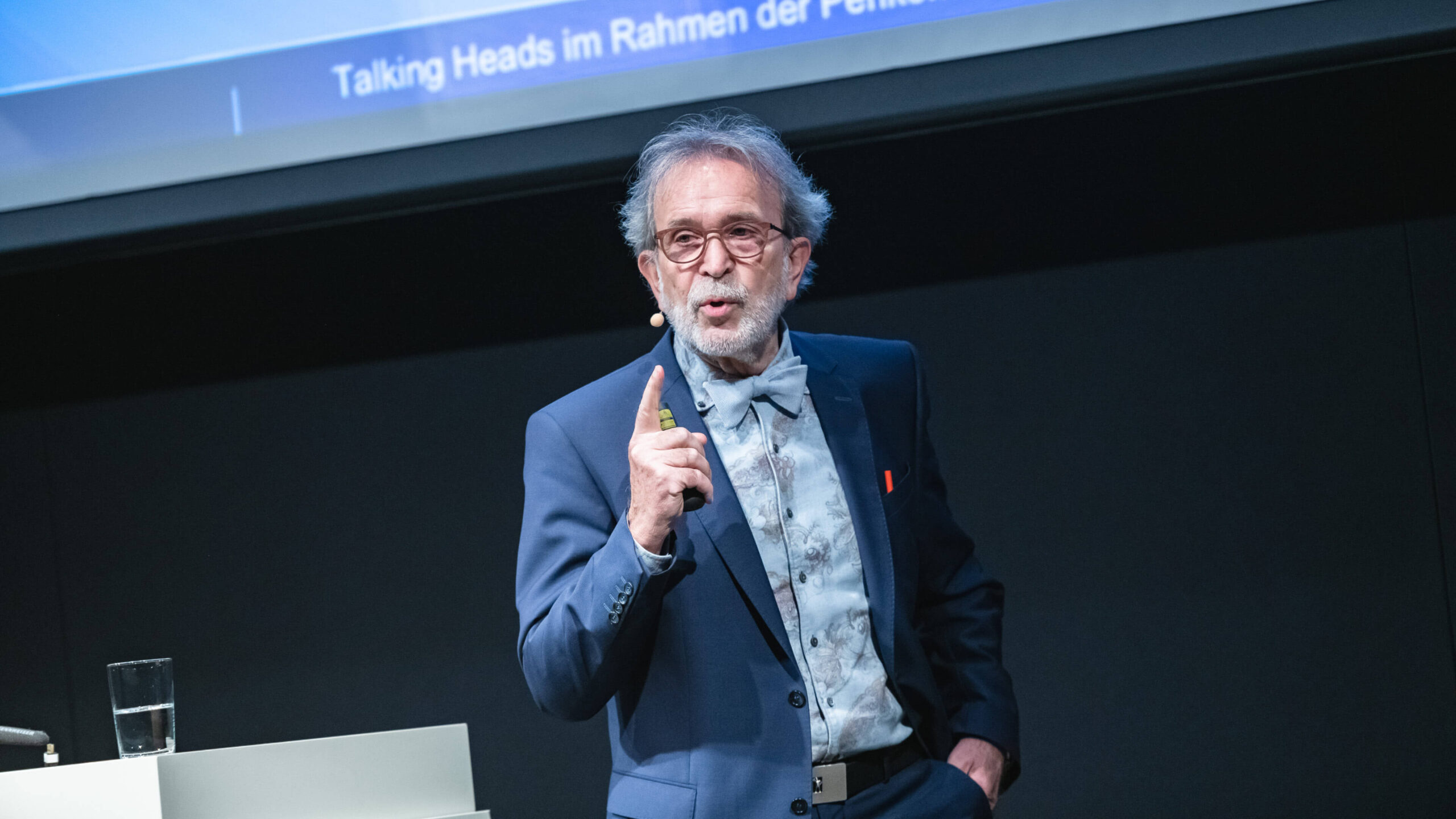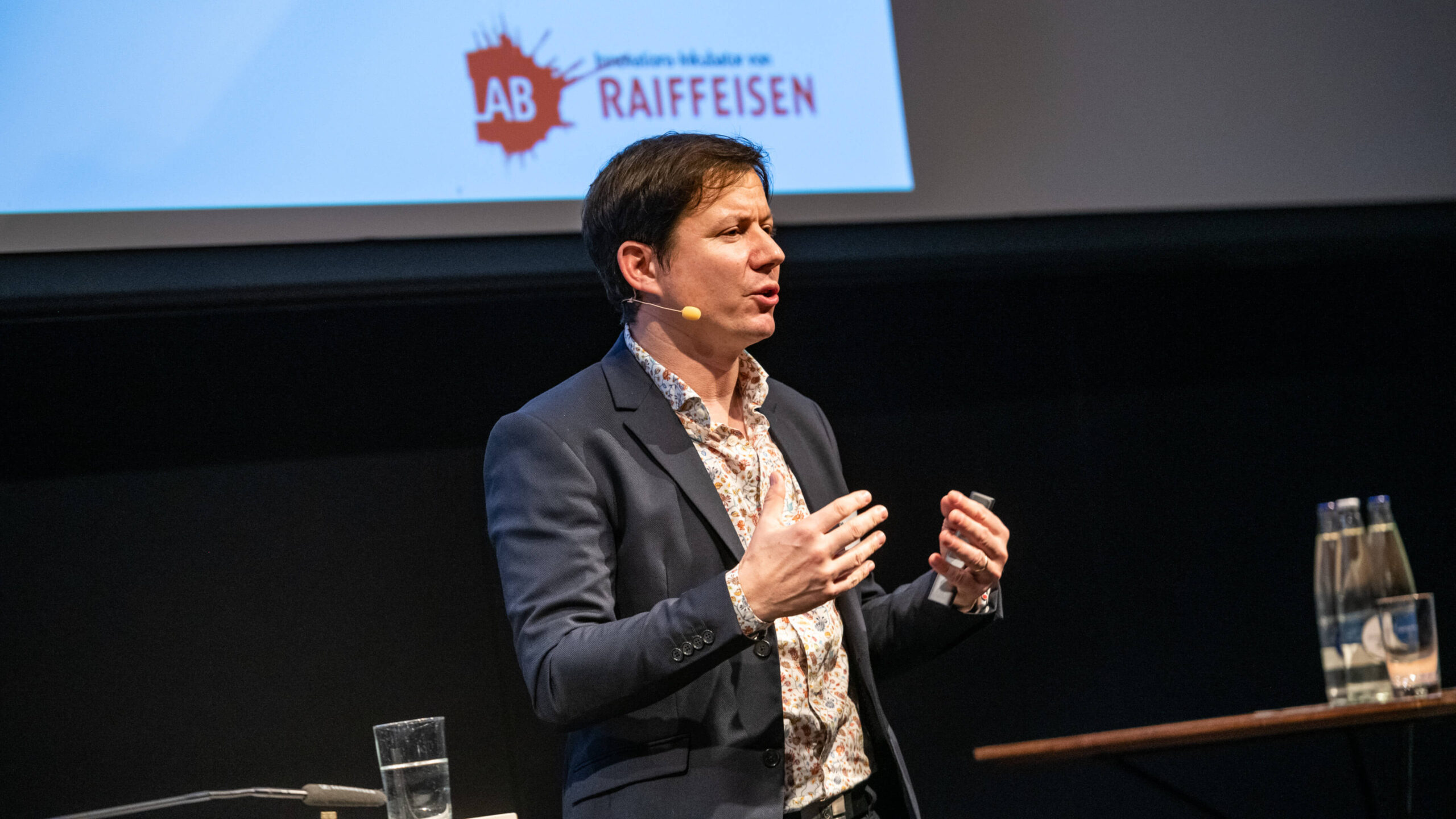Unfortunately, error free
“Talking Heads” as part of the Perikom Good Practice Series on “Innovation – from failure to progress”.
On 11 February, in the auditorium of the National Museum, we discussed the opportunities that arise from mistakes, but we failed to produce a mistake that would take us forward, open up new avenues or do anything else groundbreaking. The “main blame” for this lies with the three excellent speakers. Dr. Claudia Wohlfahrtstätter, Prof. em. Dr Theo Wehner and Stefan Jeker. Their presentations were completely coherent and convincing. Not a wrong note, not a tone too much.
But first things first: As host and managing director of Heads Corporate Communication, I am honoured to open the evening with an introductory speech. My talk will focus on the lack of a culture of failure in Swiss companies. We are world champions at embarrassing ourselves, and the impostor syndrome seems to be widespread – we don’t trust success and are almost waiting for things to go wrong. Because the mistake would prove that the success was undeserved. This creates constant tension. Reinhard K. Sprenger wrote in the NZZ arts section last autumn that we should give chance a chance. Uncertainty, chance and risk are particularly difficult for us to bear. “All this is not easy in a country where the danger of death and the danger of life are one and the same.” But as Robert Musil put it at the beginning of the last century, we grow by making mistakes: “We stray forward”. Since so many people find it difficult to talk about mistakes, I will do so myself and present to the guests three major mistakes from my professional career that led to groundbreaking career developments. However, this development was only possible because I worked intensively on my mistakes – one hour a week with a coach for 15 years. A story from IBM shows how companies should also deal with mistakes. An IBM manager bungled a major project worth 10 million. The manager offered his resignation to the then CEO, Thomas Watson Sr. Watson’s response: “You can’t be serious after we just invested 10 million in your training.”

Prof. em. Dr. Theo Wehner begins his presentation with his definition of a good culture of error that makes innovation possible. What is needed is an error-friendliness, an optimistic, enlightened attitude that serves to embrace error rather than avoid it. An attitude to error that is about managing the consequences of error, not just avoiding them. An error culture in which the consequences are harmless and corrective action is determined by the actor. These are the valuable suggestions of the first two minutes of the extremely dense presentation. Wehner then goes on to explain what the five biggest barriers to innovation are: low error tolerance, lack of conflict management, lack of cooperation, stoic planning fixation and outdated quality expectations. These points will be familiar to many in the audience from their day-to-day work. Wehner then casts doubt on the “innovation funnel”: “Hearts come in at the front and at the end of the funnel there are margarine blocks – the innovation process is far from being that linear”. But Wehner also disagrees with the equation “multiple failure = path to success”. To succeed, you do not have to have failed before. You can learn from failure, but there is no guarantee of success. It requires a greater capacity for self-reflection. And often the right thing is achieved with deliberately wrong assumptions. He refers to Hans Vaihinger’s book “Die Philosophie des Als Ob” (Edition Classic, VDM Verlag Dr. Müller). His conclusion: “Innovations show a path within a space of possibilities; they are therefore never consequential, can fail and point to an error-friendly, social, cooperative milieu”.

From theory to practice with Dr Claudia Wohlfahrtstätter, an experienced strategy consultant and owner of sinnovec GmbH. She talks about risks that must be taken consciously and that require an excellent leadership culture and trust. She looks back over the last two decades: The 2000s was the time of risk-takers. During that time, it took courage to stand up to overconfidence, because a lot of money was made with high risk. She recounts a case where an employee brought a huge risk to the attention of her manager, even though it made her unpopular with her colleagues, the risk takers. But the manager listened and put a stop to the risk. It was only months later that the “unlikely worst case” occurred, and the decisive action avoided huge losses for the company. Wohlfahrtstätter says that in an era of few checks and balances, risks can be minimised through reflective collaboration. The next decade was marked by the financial crisis, so the 2010s became the decade of compliance and governance processes. Before decisions were made, risks were meticulously assessed, evaluated and various scenarios developed. From this period, Wohlfahrtstätter presents a case of a company that took all the usual controls and checks seriously and still made a mistake. The mistake was not in the compliance and governance processes that were in place, but in the trust that was given. It turned out that not all people are capable of bearing risk and therefore responsibility. Wohlfahrtstätter’s conclusion: It depends on the people. A certain, but not paralysing, degree of control is important. However, control processes would not replace reflective and good cooperation. And there is always a residual risk. “Sometimes we make mistakes – even big ones. But always reflect – especially when you fail.”

Stefan Jeker, Head of Digital Transformation & RAI Lab at Raiffeisen Switzerland, explains what it takes to create an inspiring culture of innovation. How does a company stay fit for the future? How do you recognise the right signals and classify them as important and urgent? Raiffeisen’s Innovation Lab is a generator of new ideas and an inspirer of a vibrant innovation culture. Like Reinhard K. Sprenger, whom we quoted earlier, Jeker believes that a willingness to accept uncertainty is essential for the new. It is very important to learn quickly and to make mistakes. You have to activate people to innovate, but not everyone is cut out for it. He cites a Nielsen study that says only one per cent of people in a community want to actively shape and contribute to change. Nine per cent are multipliers, but 90 per cent are spectators. It is therefore important to empower this one per cent as leaders, because they are the driving force behind a vibrant culture of innovation. So Jeker deliberately built a hurdle into an invitation to a two-day innovation workshop: The workshop was held on Friday and Saturday. Employees who wanted to attend had to give up one day of their free time. Of course, this excluded some mothers or fathers who could not take Saturday off. But for the most part, it was the crucial one per cent – the change agents – who signed up. As an incubator, the key is to protect young ideas so that they can grow to a certain size. A high tolerance for frustration is required; an innovation project is like riding a rollercoaster – up and down. Periods of confusion and perceived chaos are part of it. It is very important that top management does not feel that they know how to avoid mistakes because of their experience and position. The appeal to management: “Stop playing HIPPO!” Let people work and then listen carefully to the results.
The critical factor for innovation is communication: getting people to listen in order to understand, implementing two-way communication to feed ideas. Ideas, mistakes and learning must be seen as opportunities and communicated. However, an idea initiator must also be a good salesman and be able to sell his idea to management. Management must be able to see the opportunities in an idea, so that they are motivated to see it through. Giving up should not be an option, and innovation is not for wimps. To break new ground, you have to be an “encourager”. Jeker concludes with a quote from Markus Reimer: “Agility, like quality awareness and willingness to innovate, comes from a simple action by managers: Appreciation”.

In the short discussion that follows, we talk about the many defeats that ex-cyclist Beat Breu has suffered after his sporting career. Asked whether Breu learns from his mistakes and whether there is anything to be ashamed of, Jeker says: “For me, the question is whether Breu sees all these incidents as mistakes at all. Perhaps he simply sees them as experiences that will help him progress”. This is the “encourager” who knows how to deal with mistakes.
